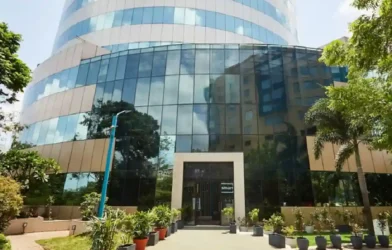Subtotal ₹0.00
India’s office market has solidified its position as the growth engine of the Asia Pacific region, recording the highest net new supply and absorption over the past decade. According to Cushman & Wakefield’s latest report, India accounted for 44% of net new supply and 61% of net absorption in Q2 2025, outpacing regional peers including the Chinese mainland and Southeast Asia.
Driven by robust demand from IT/BPM, engineering & manufacturing, BFSI sectors, and a thriving base of Global Capability Centres (GCCs), India’s top six cities—Bengaluru, Mumbai, Delhi-NCR, Hyderabad, Chennai, and Pune—have become the preferred destinations for multinational expansion. Occupiers are increasingly gravitating toward Grade A+ office spaces, reflecting a shift toward workplaces that prioritize talent, ESG commitments, and long-term resilience.
Anshul Jain, Chief Executive – India, SEA & APAC Office and Retail, at Cushman & Wakefield said, “India’s office sector is no longer just rebounding — it’s evolving into a structural growth story. From contributing a third of regional activity in 2015 to becoming APAC’s dominant force in 2025, India’s momentum reflects deep occupier demand and developer confidence. This sustained momentum, backed by GCCs, start-ups and manufacturing, reflects robust long-term fundamentals and a clear flight to quality.”
India’s leadership in regional office demand has been underpinned by strong sectoral activity. Over the past five years (2020–2025), the IT/BPM, engineering & manufacturing, and BFSI sectors have been the key office demand drivers in the country, together accounting for a significant share of leasing activity. IT/BPM sector led with 104.9 million square feet (30%), followed by engineering & manufacturing and BFSI accounting for 57.3 MSF (16.3%) and 56.8 MSF (16%), respectively.
India has firmly established itself as a global hub for digital innovation and engineering R&D, powered by skilled tech talent pool. Today, India is home to approximately 50% of the world’s Global Capability Centres (GCCs), which account for around 30% of gross leasing volume. Notably, more than 90% of this market action is concentrated around the top 6 cities – Bengaluru, Mumbai, Delhi-NCR, Hyderabad, Chennai and Pune. Bengaluru alone absorbs more office space in one year than many European cities do in five, according to the report. These cities have now become the gateway cities for global multinationals to station their Global Capability Centres (GCCs) or offshore captive centres.
This momentum is reinforced by occupier preferences shifting decisively toward Grade A+ office spaces which which command 5–10% rental premiums and enjoy 3–6% lower vacancy rates compared to standard Grade A stock. Strong competition for these assets is driving pre-commitment activity, with tenants securing space earlier in the development cycle to ensure alignment with ESG and tech requirements.
On the evolving workplace strategies Anshul said, “We’re seeing a fundamental shift in how occupiers approach office space in Asia Pacific. It’s no longer just about expansion. The office has become a platform for brand expression, cultural alignment, and performance. From India’s consistent demand to SEA’s evolving industry mix and China’s innovation-led growth, companies are prioritizing spaces that foster talent, support ESG commitments, and enable long-term resilience.”
Looking ahead, the demand for office space leasing continues to show resilience, even amid global trade tensions and geopolitical uncertainty. A growing share of pre-commitments in Gross Leasing Volume (GLV) suggests tenants will need to take an increasingly forward-looking view of the market if they wish to secure the highest quality space.














